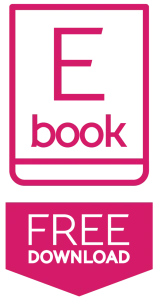Functional medicine practitioners can leverage the latest technology to improve their bottom line and their patient’s health outcomes.
This article is the final in a three-part series on the importance of functional medicine (and health) for men and the benefits of technology for functional medicine practitioners.
Functional medicine practitioners are at the forefront of providing care to men who, as they age, may encounter lower testosterone levels, increases in certain diseases like diabetes or hypertension, and reduced sexual performance. Functional medicine, as laid out in article No. 1 (Technology and Functional Medicine: Solutions for Healthier Outcomes as Men Age), is defined as “… a systems biology–based approach that focuses on identifying and addressing the root cause of disease. Each symptom or differential diagnosis may be one of many contributing to an individual’s illness.”
According to the Centers for Disease Control and Prevention (CDC), 40.5 percent of men over the age of 20 are obese, 51.9 percent suffer from hypertension, and only 28 percent meet the federal physical activity guidelines for aerobic and muscle-strengthening activity. This imbalance of health status among men is just part of the need for the “root cause” approach to care that functional medicine (along with functional health strategies, health management solutions, and health data technology) can provide.
Technology improves practice health
Before we discuss the main focus of leveraging these strategies, solutions, and technology for better health outcomes, there is another important aspect to using the right technology for your practice—improving administrative efficiencies.
Functional medicine as a practice is fairly new and understanding how best to position your practice for success starts with ensuring the business side is run properly and efficiently. There are two major ways that using technology (like Calcium’s app and provider dashboard) can help to keep your business-to-consumer operations running smoothly, as well as properly managing staff workload.
Using health data management technology can:
- Help streamline scheduling appointments, managing cancellations, and automating certain simple processes like adding calendar entries, follow-ups, or other tasks that may be pulling your staff away from their primary duties,
- Help your patients stay on top of their care plan. Imputing information about their physical activities, diet, mood, medications, etc. can help to limit costly and time-consuming visits.
These tools can also improve your team’s productivity through:
- Identifying patients that may need more support or intervention
- Automatically guiding and monitoring patients more frequently
- Coordinating with their other health care providers
- Improving patient engagement (leading to better patient satisfaction)
Technology supports treatments
Effectively and efficiently managing the practice is important, but the reason functional medicine practitioners are in business is to help their patients achieve the health outcomes they need and want. The administrative efficiency afforded by tools like the ones offered by Calcium help to keep the practice moving forward, but more importantly, give the doctors and medical staff key data points to create the best care plan for their patients. Here are some examples of how technology tools can help you give your patients the best care outcomes:
Improving health care through pathways
Tools like the Calcium app provide care pathways that a patient participates in to help them, and their care team, keep track of health improvements. For example, there are periodic, fun challenges that your patient and their family and friends can participate in like the “Fit in Fall Challenge” or the “Family Healthy Eating Challenge” (among others). These pathways also can be configured to help “…educate, motivate and even check in with [your] alternative medicine clients.” The pathways also help guide your patients’ healthy living journey with:
- Medication tracking
- Learning modules
- Blood pressure monitoring
- Weight management
- Feedback and communication
Communication and feedback
Staying on top of your patients’ care—while also communicating effectively—is a vital part of your service to your patients. The functionality available in the app provides an option to receive regular feedback from patients so you stay up to date and can make recommendations to change what they’re doing (i.e., increase cardio, add a supplement, etc.) or just to give some helpful motivation!
Devices and data
What makes these health data tools so relevant to current health care is the ability to integrate them with some of the latest fitness devices and important medical services. Some examples of connected devices include Garmin, Omron, Fitbit, Dexcom glucose monitoring, and Withings. Calcium has also partnered with medical labs like Dynix Diagnostix, Boston Heart Diagnostics, Quest Diagnostics, Labcorp, and Access Medical Labs. Electronic medical records are also able to integrate with the app, so you have a “one-stop-shop” view of your patients’ health status.
Security is key
All of this technology wouldn’t be useful if you didn’t trust it, so it’s important that whatever tools you use meet the highest security standards possible. They must be reliably secure and at minimum meet the latest HIPAA compliance standards to ensure your patients’ privacy and confidentiality are protected. Also, you can make sure that your patients select strong passwords and keep them in a safe place, so they won’t be compromised.
Efficient business, healthy patients
Many of the issues that adversely affect men’s health (low testosterone, unhealthy weight, sexual performance issues, heart disease, etc.) are complicated to treat, but many practitioners (and their patients) can benefit from the use of health data technology tools that bring the entire range of health devices and support services to bear to optimize patients’ care. These tools can also streamline both the business and consumer side of medicine. Keeping your practice staff working and focused on patient outcomes is the goal and the best way to do that is through improved efficiencies and the proper technology tools. Combining these technology utilization strategies can benefit your practice and your patients so they achieve the goal of thinking healthier.

















